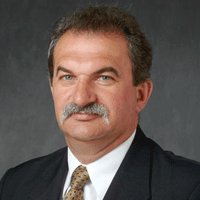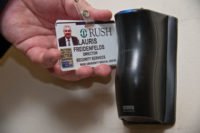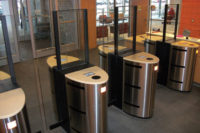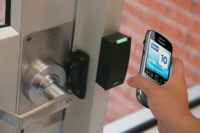Once considered safe havens, health care institutions today are confronting steadily increasing rates of crime, including violent crime,” said an alert issued last year by the Joint Commission, a national accrediting agency. Since 2004, the number of assaults, rapes and murders reported to the Joint Commission rose steadily, with the greatest number of reports in the last three years: There were 36 incidents nationwide in 2007, 41 in 2008 and 33 in 2009. According to the Joint Commission’s voluntary reporting system, there were 256 assaults, rapes or homicides of patients and visitors at American health centers since 1995, with 110 of those acts occurring after 2007.
While shootings and rapes are acts of extreme violence, the International Association for Healthcare Security and Safety (IAHSS) 2010 crime and security trends survey reports that burglary, larceny, vandalism and motor vehicle theft are also prevalent in health care settings, particularly in parking structures. Hospital parking lots provide ample auto theft opportunities for the perpetrator who specializes in stealing cars. The total number of larcenies increased in 2010, but overall the trend has been decreasing over time. Similarly, the number of motor vehicle thefts has varied from year to year, but shows an overall decline across survey years.
A criminal’s ability to select specific targets is a process by which the rational criminal will select the easiest target that provides the highest reward. One may think of target selection primarily as a force of opportunity. The goal, then, for hospital security professionals is to reduce the available crime opportunities at the facility.
First Line of Defense
A key to preventing violence in hospitals is controlling access, wrote Russell L. Colling, a health care security consultant who contributed to the Joint Commission report. The first line of defense in access control is often the attendant’s booth upon entry to the lot.
Nick Radu, system director for Henry Ford Health System in Detroit, uses Parkut booth structures as remote monitoring stations. “They provide a prefabricated security area with alarm monitoring and closed circuit camera systems (CCTV),” he explains. “The booths protect the operator from the elements and are a sign of refuge for those using the parking lot. I use them as cashiering stations and security observation posts in the surface lots.”
Robert (Bob) Baer, Parking & Transportation, Facilities Management for Cincinnati Children’s Hospital Medical Center, explains that he controls ingress and egress in the hospital’s employee garages with roll-up doors that are programmed to open at peak arrival and departure times. Hospital personnel swipe their identification badge in front of a reader that communicates with the door, enabling it to open. High Speed Roll Gates manufactured by Hormann Flexon allow for quick and easy access during non-peak hours without compromising the security of the garage.
“It is hard to quantify how much of a deterrent the high speed doors are, we do know that the garage is much more secure as the doors open and close in a split second,” explains Baer. Normal roll gates will take anywhere from eight to 15 seconds to close after a car has entered. This is more than enough time for the opportunistic criminal to gain access to a garage full of cars.
“At this point, only one garage, with more than 2,000 spaces, has these high-speed doors,” says Baer. “We would like to have them at each of our locations.”
Have Technology, Will Protect
Security directors have their wish list of best-in-class security systems. For many, that list includes high-tech equipment like security video, alarm systems, two-way communication systems and license plate readers. Participants in the IAHSS survey were asked whether security has improved or declined in the last five years. Eighty-four percent responded that security and safety has improved, six percent said that it has declined, and 10 percent said that it has stayed the same. When respondents who answered that security had improved over the past five years, they cited technology upgrades as a leading contributor.
Karim H. Vellani, CPP, CSC, an IAHSS member and president of Threat Analysis Group, LLC, an independent security consulting firm, says that introducing countermeasures that increase the chance of criminal detection, such as the presence of a visitor management system or security video, may deter many criminals.
Hired six years ago at Greenville Hospital System University Medical Center, South Carolina, Shawn Reilly, CCP, CHPA, made it his objective to become the benchmark for security in the Southeast. In that time, he has invested $6 million in technology, such as call boxes, security video and license plate reading cameras that capture plate information upon entry to the garage. He also hopes to install electric signs that flash crime-prevention tips to those entering the garage. “These tools are essential for fighting crime,” he says. “At this point, on a scale of 1 to 10, with 10 being the best, I believe my security strategy ranks about an 8. We are in good shape, but there is always room for improvement and tools like this will help us get to a 10.”
Like video cameras, lighting can be a major crime deterrent. For Lauris Freidenfelds, director, Security Services, Emergency Management for Rush University Medical Center, and a spokesperson for IAHSS, keeping both his older and newer parking structures safe comes down to lighting. He admits that the parking structures have their fair share of criminal activity, such as auto break-ins, theft and accidental damage, but says: “Lighting is a good deterrent because criminals like to lurk in the dark,” he says. “In addition, quality lighting helps ensure the quality of the video we might capture of a crime in progress.”
Chicago’s Rush also combines lighting with glass stairwells to offer visibility to the outside. And in the newer of its garages, the walls are white washed to enhance the lighting.
But not everyone is convinced that technology alone is the answer to deterring crime. Cameras are located on each level of a four-level parking garage with 728 spaces at Memorial Hospital at Gulfport, MS. According to Paul Bennett, manager of Security Services at the hospital, these analog, no zoom-capability cameras are adversely affected by lighting and weather conditions. “Being a 24-7 facility, it is difficult to monitor all areas in the garage continuously throughout the day. We are migrating to IP-based camera systems that will provide significant improvements to our surveillance capability,” he says. “Replacing all analog cameras with IP-based camera technology provides improved response times, and is a tool to aid in documentation of events to assist the police in investigations and apprehension, but not completely eliminate threats in the parking structures.”
The Human Element
While hospitals spend millions of dollars on access control systems, security video and lighting, security personnel are just as valuable, says Robert Chicarello, CPP, director, Security & Parking for Brigham & Women’s Hospital in Boston. “We are located in an inner city environment so security of patients, visitors, staff, and their vehicles is the utmost importance,” he says. “We rely on vehicle and bicycle patrols in the garages on a random basis to watch over garage activity. Garage managers also make foot patrols. As a result, we have not had a car break-in in several years.”
Baer, who represents government, institution and non-profits, on the Executive Committee of the National Parking Association, agrees that the human element is a crime deterrent. “You can throw all the technology you want at security, but all crimes are crimes of opportunity and the best way to reduce that opportunity is with people.” Baer and Dan Yaross, director of protective services at Cincinnati Children’s Hospital Medical Center, have worked together to install many technologies, but they are quick to point out that people have actually been the key to catching crimes in progress. “Six years ago, there was a suspicious character ‘shopping’ through the visitor parking garage,” remembers Yaross. “A visitor saw the person and notified our command center. At the same time, a hospital employee, who had crossed through a security gate between the employee and visitor parking lots also spotted the perpetrator and notified security. Officers were dispatched and were able to catch the person, who already had stolen items on his person. Two weeks before this event, a vehicle in the long-term visitor lot had been broken into and we were able to confirm with video that it was the same person. Note, however, that this criminal was only caught because people saw and reported the crime.”
“Hospital employees are our eyes and ears,” echoes Gary Taylor, Police Lieutenant at Parkland Hospital in the Dallas/Ft. Worth area. “Educating employees and visitors to take basic precautions about protecting the contents of their vehicles, such as not leaving valuables in sight, can have a tremendous impact on reducing crime.”
Parkland’s Police Chief Kenneth Cheatle runs down the statistics that support the drop in numbers: In 2008, the hospital’s four parking garages experienced a total of 88 car burglaries. Just by educating people about crime prevention techniques, he says car burglaries dropped 44 percent in 2009. “We arrested eight people that year as well,” he says. “The crime numbers always come down if you catch the criminal and prevent them from committing another crime.”
|
Reducing Crime by Design
Analysis of the parking structure before it’s even built can also be a metric for improving safety. One methodology, Crime Prevention Through Environmental Design (CPTED), can enhance the performance of security and safety measures, as well as provide aesthetics and value engineering. According to the National Institute of Building Sciences, CPTED uses four principles: Natural Surveillance, Natural Access Control, Territoriality, and Maintenance. Natural surveillance follows the premise that criminals do not wish to be observed, placing legitimate “eyes” on the street, such as providing window views and lighting, increases the perceived risk to offenders, reduces fear for bonafide users, as well as lessening reliance on camera-only surveillance. Natural Access Control supplements physical security and operational measures with walls, fences, ravines, or even hedges to define site boundaries, to channel legitimate users to designated entrances, and to reduce access points and escape routes. Territoriality involves strategies to project a sense of ownership to spaces such that it becomes easier to identify intruders because they don’t seem to belong. Clear differentiation between public, semi-public, and private spaces by using signage, fences, pavement treatment, art, and flowers are examples of ways to express ownership. Maintenance is a key element to preserve lines of sights for surveillance, to retain the defensiveness of physical elements, and to project a sense of care and ownership. Mike Cummings, director of Loss Prevention Services at Aurora Health Care in Wisconsin, says it is key for security to be involved in the building planning process early so that the right equipment and lighting can be included in a cost-effective manner. “This may also provide opportunity to include CPTED principles to all aspects of the structure and access control elements where the structure connects to the main building.” “It is imperative to get security’s input on architecture and design of both new and existing hospital parking lots,” agrees Nick Radu of Henry Ford Health System. “Security can present design recommendations to prevent crime through environmental design and manipulating the physical environment to produce behavioral effects that reduce fear and incidents of certain types of criminal acts.” In the Joint Commission report, Colling wrote that the roots of violence need to be investigated and evaluated, but security pros are realistic about how much they can control and prevent criminal activity. “I am a security zealot, but I’m not naïve,” says Reilly. “As security directors, we are always protecting from our last threat, but there is always a new one. We can’t stop crime, but we can be proactive and be a tougher target.” |
|
Identifying Sources of Threat Every day crimes are the most common threat facing hospital security professionals in protecting their assets. A thorough assessment of the specific nature of crime and security breaches can reveal possible weaknesses in a hospital’s current security posture and provide a guide to effective solutions. Vellani says an understanding of everyday crime’s dynamic nature allows hospital security professionals to select and implement appropriate countermeasures to reduce the opportunity for these incidents to occur in the future. Threat dynamics identifies key elements of each threat and the methods to block specific threats. Depending on the nature of the assets in need of protection, the sources of threat information may include internal information, security breach investigative reports, law enforcement data, security consultants, media news reports and industry associations. Among the basic questions that hospital security professionals should seek answers to are:
Acting Chief of Police David Easthon of the Cleveland Clinic prides himself on carrying out the hospital’s mission: Providing world-class health care and creating a safe environment in which to reach that goal. Easthon does this through continuous risk assessment and daily analysis of his security team. “We use strategic crime management to examine what crimes occurred in a given week and make adjustments to reduce the chance of that crime occurring again the following week,” he explains. “We then meet again to see if we were successful in minimizing the risk.” Easthon’s team also reviews how well and how quickly they responded to a particular action. “From the time a call comes into the command center via intercom or Blue Light call box, our response is triggered and help is dispatched,” he says. “Analyzing our response time helps establish a metric for improvement.” |







